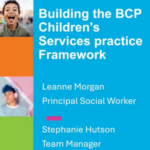
The number of overseas recruits to the social care sector has plummeted as a report highlights how reliant the sector has become on international staff.
From April to June this year, an estimated 8,000 international recruits joined the adult social care workforce in England, down from a quarterly average of 26,000 in 2023-24, according to data from Skills for Care.
The sharp drop started in the month after a ban came into place on overseas care staff bringing dependants with them when taking jobs on health and care worker visas.
How overseas care staff have improved workforce indicators
Skills for Care shared the figures today as its annual State of the Adult Social Care Sector and Workforce in England report for 2023-24 demonstrated that overseas staff had been largely responsible for reducing vacancy rates and cutting turnover to its lowest level in almost a decade.
In addition, international care staff were more likely to have achieved the entry level care certificate standards than domestic recruits, while they had also helped increase the proportion of men – a target group for recruitment – in the workforce.
However, despite the contribution of overseas staff, the adult social care vacancy rate (8.3%) was almost three times the economy-wide average, while just two in five care workers (41%) had a relevant qualification at level 2, a figure that has been stuck since 2020-21.
Average pay rises but social care still lags other sectors
Following a real-terms fall in average pay for staff in 2022-23 – as a result of high rates of inflation – median pay for independent sector care workers grew from £10.11 to £11.00 per hour as of March 2024, a rise worth 8.8% in cash terms and 5.7% in real terms. This was driven by a 9.7% cash increase in the national living wage (NLW), from £9.50 to £10.42 per hour, in April 2023.
However, the sector continued to lag behind most parts of the economy, with 80% of workers in the UK earning at least £11.54 as of November 2023, according to Office for National Statistics (ONS) figures.
The news came as the government unveiled its Employment Rights Bill, which includes provisions to set up an adult social care negotiating body to determine pay and conditions in the sector, with a view to raising salaries.
A growing and more stable workforce with fewer vacancies
The number of filled adult social care posts, which fell for the first time in 2021-22, grew for the second consecutive year, from 1.635m in 2022-23 to 1.705m in 2023-24, a rise of 70,000 (4.2%).
This was driven by growing numbers of home care (42,000) and NHS roles (8,200), though there was a fall of 7,200 in the number of personal assistants, who are employed by direct payment recipients.
At the same time, the vacancy rate, which hit a peak of 10.6% in 2021-22 before falling to 9.9% in 2022-23, dipped again to 8.3% in 2023-24, equivalent to 131,000 roles.
As in previous years, the rate was considerably higher in domiciliary care (11.5%) and for direct payment recipients (11%), than in community care (6.2%), residential care (5.2%) or day care (4.9%).
The vacancy rate fell across all roles, with the highest percentage point fall being among care workers, where it dropped from 11.8% to 9.9%.
The workforce was also more stable, with the turnover rate across the independent and local authority sectors – who collectively employ 86% of the workforce – dropping from 29.1% in 2022-23 to 24.8% in 2023-24, the lowest level since 2014-15.
Positive trends driven by overseas staff
Skills for Care said that these trends had largely been driven by overseas staff, on the back of the Conservative government’s decision to allow employers to recruit care workers from abroad via the health and care visa from February 2022.
From 2021-22 to 2023-24, the number of posts filled by staff who were from outside the EU rose by 160,000 (from 140,000 to 300,000), meaning their share of the workforce increased from 9% to 19%. Over the same period, the number of posts held by British nationals fell by 70,000, from 1,260,000 (84% of the workforce) to 1,190,000 (75%).
Employers who employed at least one non-British worker who arrived in the UK from April 2022 to March 2024 saw their turnover rate fall by 8.1 percentage points (from 41.5% to 33.4%) from 2021-22 to 2023-24. While employers who did not recruit internationally had a lower turnover rate to start with – 31.6% in 2021-22 – this only fell by 2.9 percentage points over the period (to 28.7%).
Similarly, employers who recruited internationally saw their vacancy rate fall from 12.8% to 8.5% over the two-year period – a drop of 4.3 percentage points – while the rate for other employers fell by only 1.2 percentage points, from 8.1% to 6.9%.
Qualifications and sickness absence gaps
Skills for Care also found significant gaps between international and British staff recruited in 2023-24 in relation to qualifications and levels of sickness absence.
While international recruits took an average of 2.5 days’ sickness absence during the year, domestic recruits took 9 days. Also, while 55% of those international recruits had completed the care certificate standards, which set basic expectations of care workers, by March 2024, this was true of 37% of British recruits.
International recruits also drove the rise in the proportion of men in the workforce, from 19% in 2022-23 to 21% in 2023-24, the highest level yet recorded. Men made up 29% of international recruits in 2023-24, but just 15% of domestic recruits.
Warning over ‘rapid’ decline in number of international recruits

Skills for Care chief executive Oonagh Smyth (photo from Skills for Care)
“On the face of it, the headline statistics paint a positive picture,” said Skills for Care chief executive Oonagh Smyth. “The workforce grew for the second consecutive year and we’ve seen the lowest turnover in a decade.”
“[But] the improvements in this year’s report are largely driven by international recruitment…and there is early evidence that the number of international recruits is rapidly falling.
“And it’s clear that social care is struggling to compete for staff in local labour markets so longstanding domestic recruitment and retention challenges exist.”
She added: “So we need to stem the tide of British care workers who are leaving their jobs and we can only do that by improving the quality of care roles so the sector can be more competitive in local job markets.”
Adult social care workforce strategy
In the summer, Skills for Care published a 15-year strategy for the workforce, designed to improve recruitment and retention in order to fill current gaps and meet the sector’s future needs, in the context of an ageing population.
The strategy, conceived by sector leaders, urged action to boost pay and qualification levels in the sector, along with measures to attract currently underrepresented groups, such as men and young people, into the workforce.
Skills for Care has set up an implementation unit to support adoption of the strategy’s recommendations. However, half of the recommendations are for government, either alone or in partnership with others.
No funding plan for pay improvements
While the Employment Rights Bill is designed to boost pay and conditions for adult social care staff, the government has not set out how it will fund local authority and NHS commissioners to pass on the required increases in fees to enable providers to deliver on these improvements.
This is the context of providers already warning that they are significantly under-resourced to deliver services. For example, the Homecare Association has calculated that there there is a £1bn gap between the home care fees paid by commissioners and the amount required by providers in England to pay staff the NLW.
Meanwhile, in relation to training and qualifications, the Labour administration has cut funding levels for 2024-25 by £115m relative to its Conservative predecessor’s plans.





 Bournemouth, Christchurch and Poole
Bournemouth, Christchurch and Poole  Hampshire County Council
Hampshire County Council  Oxfordshire County Council
Oxfordshire County Council  South Gloucestershire Council
South Gloucestershire Council  Wokingham Borough Council
Wokingham Borough Council  Webinar: building a practice framework with the influence of practitioner voice
Webinar: building a practice framework with the influence of practitioner voice  ‘They don’t have to retell their story’: building long-lasting relationships with children and young people
‘They don’t have to retell their story’: building long-lasting relationships with children and young people  Podcast: returning to social work after becoming a first-time parent
Podcast: returning to social work after becoming a first-time parent  How managers are inspiring social workers to progress in their careers
How managers are inspiring social workers to progress in their careers  Workforce Insights – showcasing a selection of the sector’s top recruiters
Workforce Insights – showcasing a selection of the sector’s top recruiters 

 Facebook
Facebook X
X LinkedIn
LinkedIn Instagram
Instagram
It’s mass exploitation. I’m glad to see this has slowed down.
It grieves me also to see Britain continuing to enjoy the presumptively inexhaustible human capital of impoverished and developing countries. The colonial dynamic remains as robust as aforetimes.